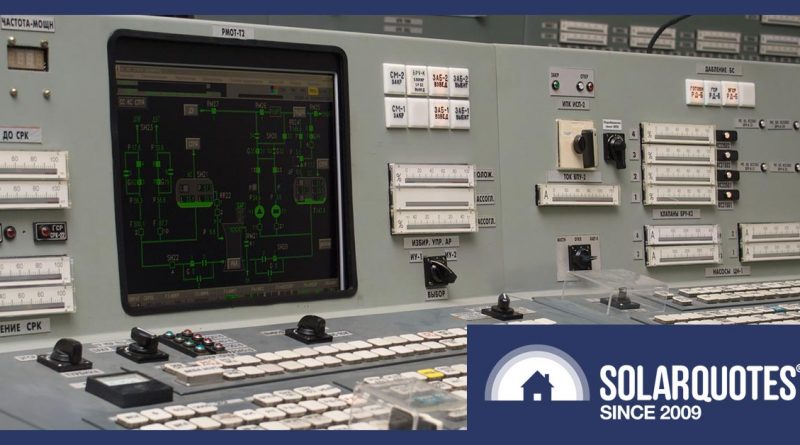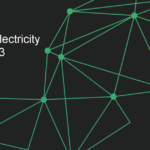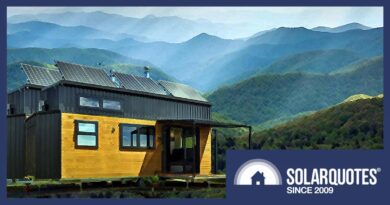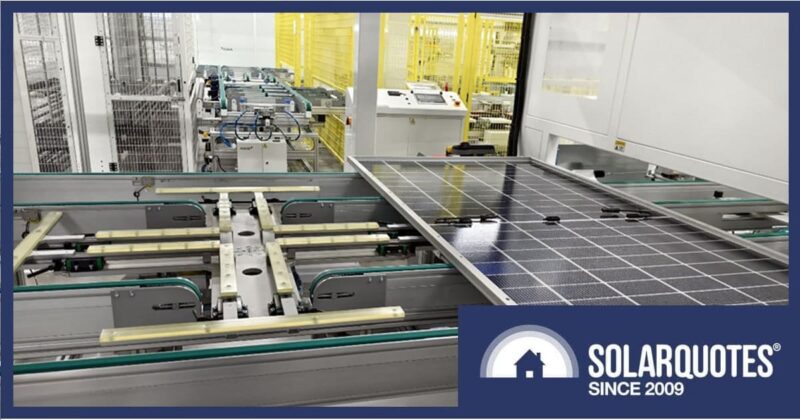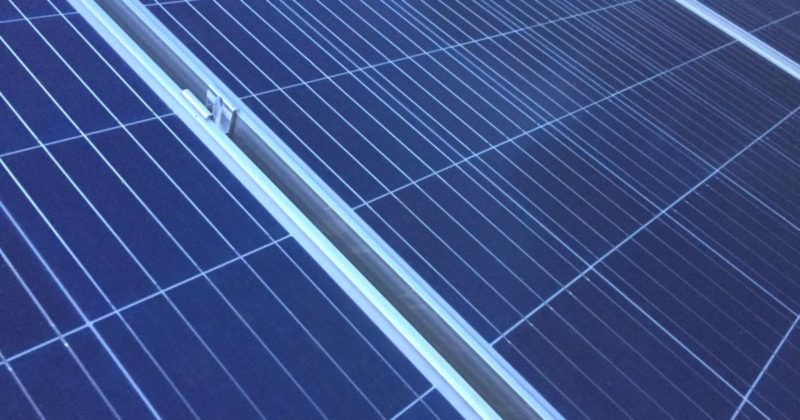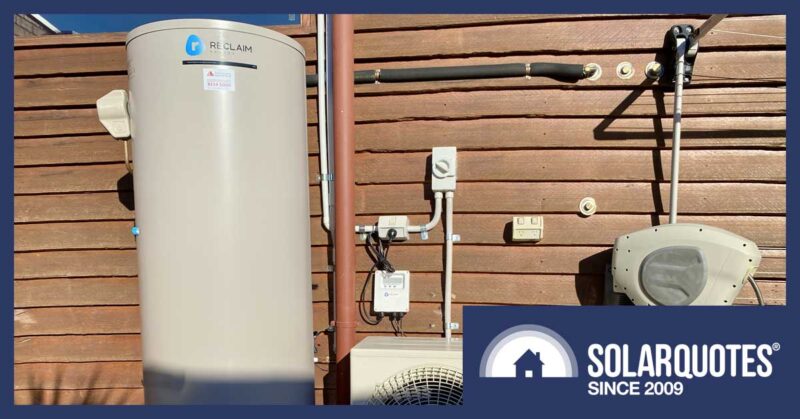Inflexible Fossil Fuels: Why Starting And Stopping Coal & Gas Power Costs Big Bucks
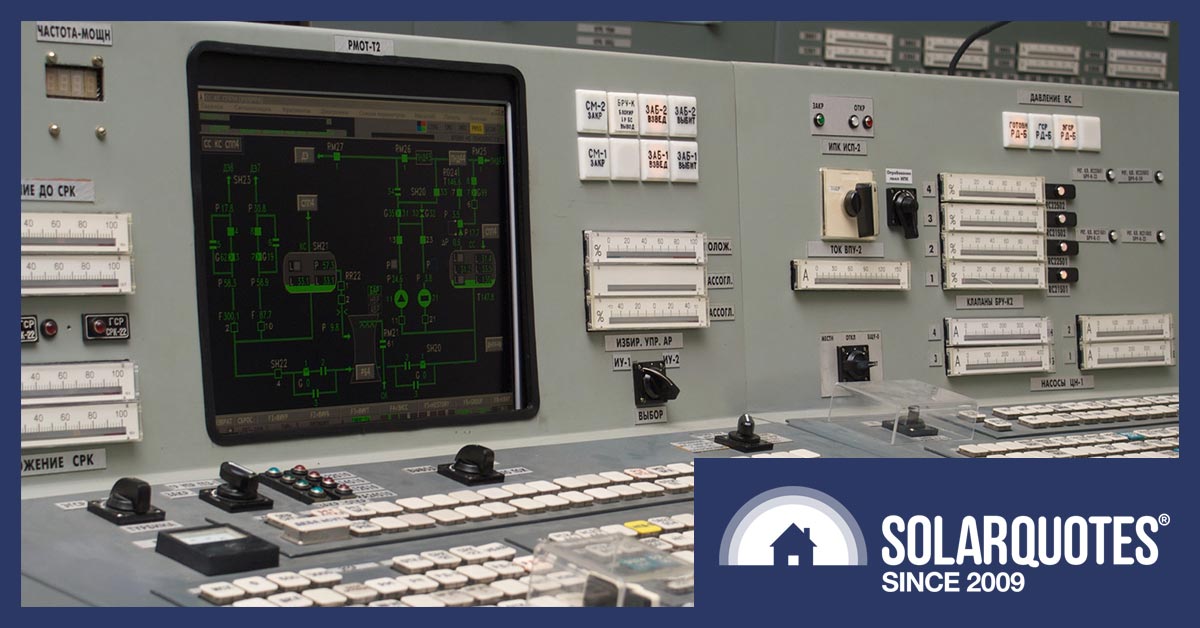
A power station control room. Starting up one of these things is not trivial or cheap.
Coal power is gradually being driven out of business by renewables. It simply can’t compete on price. Most people know coal and gas power stations have to pay for fuel while sunshine and wind are free, but not many know how much it costs to start and stop fossil fuel generators.
The cost is massive. This is a major problem for fossil fuel finances because, as renewable generation grows, it creates more periods of low wholesale electricity prices that force coal and gas generation to either shut down or operate at a loss.
According to the Electranet report — Generator Technical and Cost Parameters — published in July last year, the cost of a cold start-up of all generating units of Australia’s largest gas and largest coal power stations is estimated to be…
If you instead consider Australia’s largest coal power station to be Loy Yang A and B combined — which is reasonable — then its estimated cold start cost would be:
The reason starting fossil fuel power plants burns big bucks is partially due to the fuel required to warm it up and get things started, but it’s mostly because of wear and tear from expansion and contraction caused by changes in heat and pressure. It dramatically increases the need for maintenance and the frequency of overhauls.

I said overhauls, not overalls. (Image: The Observer)
Due to the cost, fossil fuel power stations hate to shut down. But wind and solar energy are eating their lunch by creating periods of very low or zero electricity prices. Solar power mostly does it around lunchtime, while wind tends to snack from the fossil fuel money fridge very early in the morning.
Cutting output to a low level during these times normally isn’t an option due to the inflexibility of most coal and gas power stations. They simply cannot turn down the power as far as they’d like. Victoria’s brown coal power stations are the worst in this regard and generally can’t operate below 60% of maximum output for an extended period without shutting down. While a power station may have several units that can be shut down individually, starting them up again can still be an expensive problem.
If you want more details on why it is so expensive to stop and start coal and gas power stations and why it means fossil fuel generation isn’t just boned but super-boned, read on. If you already know all about this, then good work. You can reward yourself by reading a web comic. But if you don’t know and don’t care, then, for your insouciance, I sentence you to watch this video by a high school teacher on why climate change is an absolute nightmare:
Start-Up Cost Components
It doesn’t cost much to turn on a PV solar system, whether it’s a tiny 2 kilowatt rooftop system or a huge solar farm. The energy the solar inverter requires comes from the panels, so it mostly comes down to wear and tear on the switch. Being turned on and off may cause some wear and tear on the inverter’s electronics, but it’s not going to be very significant. Solar panels are a unique form of generating infrastructure because they may suffer less wear and tear from being used to generate electricity than when the system is off. This is because they don’t get quite as hot when used to generate electricity.
When it comes to wind power, I’m afraid I only half understand how it works because I’m only half Dutch.

Looking at that sky, you can see why the Dutch decided to give wind power a go before solar.
But starting a wind turbine wouldn’t cost much more than solar, as the wind does most of the work. The onboard computer will need a little power, and maybe the lubricating oil needs to be warmed up — but perhaps that’s only in cold countries? I don’t know. I lack the genes that would give me that knowledge. Anyway, whatever the cost is, it’s going to be bloody low.
In contrast, fossil fuel generation has all kinds of start-up costs. These are broken down into seven areas:
- Non-fixed labour: A start-up involves more work than not starting up, so labour costs increase.
- General engineering costs: People have to be paid to make sure stuff that’s not supposed to blow up doesn’t.
- General management costs: Someone needs to make sure everyone shows up for work, follows the rules, adheres to safety procedures, electricity price offers get bid in, wake up Homer Simpson, etc.
- Maintenance and Overhaul Expenditures: While any system of generation that requires flames and/or controlled explosions to generate power will suffer wear and tear while in use, one of the biggest causes of wear and tear is cooling off and heating up. This is a massive cost for coal power.
- Start-up Auxiliary Power: Most power stations cannot start themselves and require power from the grid to get going. This makes a black start — which is getting a grid going again after a total blackout — a tricky process.
- Start-up Fuel: Fuel has to be consumed to get a power station warmed up and working.
- Start-up Consumables: Fuel additives, water, and other chemicals1 can be required to get a power station going.
How much a fossil fuel power station has to pay to cover these start-up costs depends on the type of generation and how cold it is when the start-up occurs.
Fossil Fuel Generation’s 6 Types
The report covered the 6 main types of fossil fuel generation:
- Open Cycle Gas Turbine (OCGT): Many small, controlled, gas explosions are used to spin a turbine to generate electricity. The waste heat is wasted.
- Combined Cycle Gas Turbine (CCGT): Same as OCGT, but the waste heat is used to generate electricity. It’s more complex but more energy efficient.
- Gas Steam Turbine: Gas is burned to boil water to create steam that turns a turbine. It’s basically what happens when gas generation gets drunk and tries to be a coal power station. While there are a number of small ones, the only large one in Australia is on Torrens Island in South Australia and the information in the report is based on it.
- Reciprocating Engine: A giant truck engine with a crankshaft and pistons used to generate electricity. Runs off gas, diesel, kerosene, or a mix. The report only considers large ones.
- Brown Coal: Low quality coal is burned to make steam to spin a turbine. Very fatal.
- Black Coal: Higher quality coal is burned to make steam to turn a turbine. Very fatal but not as fatal as brown coal.
Hot, Warm, & Cold Starts
The report divides start-ups into three categories:
- Hot: The generator hasn’t been shut down for long. Depending on the type of generator, this can be from 1 to 12 hours.
- Warm: I probably don’t need to explain this is the state between hot and cold. Because they cool off quickly, the report doesn’t consider OCGT and Reciprocating Engine generation to have this category of start-up.
- Cold: Brass monkeys. It can take from 1 to 48 hours to get into this category, depending on generation type.
The typical time each type of fossil fuel generation needs to be shut down to require a hot, warm, or cold start is shown in the table below:

As you can see, the two types of generation that take the most time to cool off are the country’s single large Gas Steam Turbine power station and coal generation. This is due to the massive size of these generators. It is an advantage over other types of fossil fuel generation, but it is the only advantage coal generation has.
Start-up Costs
The table below gives the costs per megawatt (MW) of generating capacity for the different kinds of start-ups. To determine the cost for an entire power station, multiply its capacity in megawatts by the relevant amount on the table2.
These estimates are for typical Australian generators of each type. So it’s for a new reciprocating engine, since the only large ones we have are fairly new, and it’s for an old coal power station since the average age of our coal power stations is high. The last time we built a coal power station was 12 years ago in Western Australia. It was, of course, a huge mistake.

As you can see, coal power has — by far — the highest start-up costs for every category. This why the start-up of a large coal power station can cost over one million dollars.
Responsiveness — Coal Is Slow
When it comes to the time required to start up, coal power also takes the longest time in every category, as the following table shows:

Coal power and Gas Steam Turbine require the longest periods of time to get going. The Gas Steam Turbine takes so long because it operates in a similar way to coal power.
Reciprocating Engines and Open Cycle Gas Turbines are the most responsive fossil fuel generators and best able to respond to a shortfall in the supply of electricity quickly.
Minimum Stable Output
This final table shows the estimated minimum output different types of fossil fuel generation can operate at without shutting down. There are two figures for CCGT because there are two main types. As you can see, the first type of CCGT and Brown Coal have the least flexibility and normally can’t operate at under 60% of their full load.
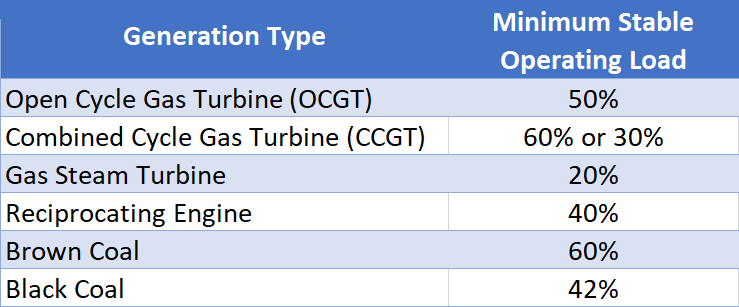
These figures will vary from power station to power station. It may be physically possible for power stations to operate under these percentages, but it’s not done for practical reasons. For example, while Open Cycle Gas Turbines can operate at a much lower output than 50%, most need to be run around that load or higher to limit their nitrous oxide emissions.
Renewables Driving Coal Power Extinct
Coal power’s high start-up costs combined with inflexibility means the decreasing cost of renewable energy is driving it towards extinction.
This is a good thing because it’s either us or it. And I vote for us.
Two types of gas generation — Open Cycle Gas Turbine and Reciprocating Engine — can respond quickly and flexibly to changes in electricity prices and have relatively low start-up costs. They can shut down during periods of low electricity prices that result from renewable energy’s zero fuel cost and start up again when the price rises. But this won’t save them.
With the cost of renewable energy and battery storage still falling, this just means they’ll be the last to die. Hopefully, it won’t be too long before all fossil fuel generation goes the way of the dinosaur.

Footnotes
- Yes, water is a chemical. Here is its Material Safety Data Sheet. ↩
- These estimates assume a cost of $10 a gigajoule for gas. It’s under $7 at the moment, so the figure for gas generation would be slightly lower now. ↩
Original Source: https://www.solarquotes.com.au/blog/inflexible-fossil-fuels/

